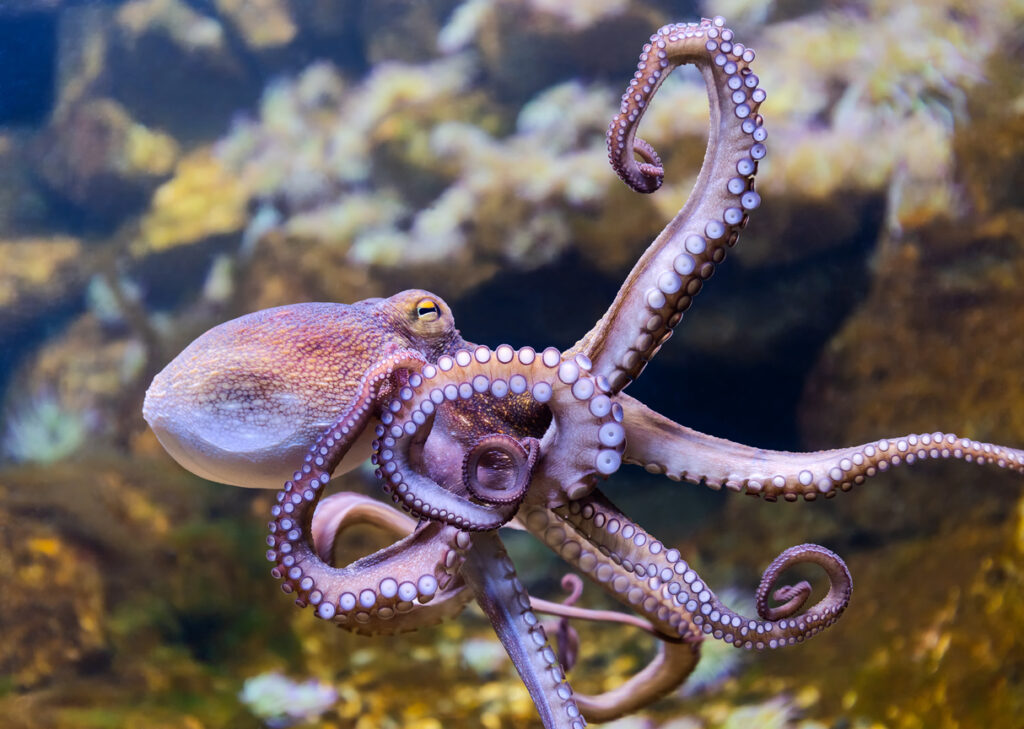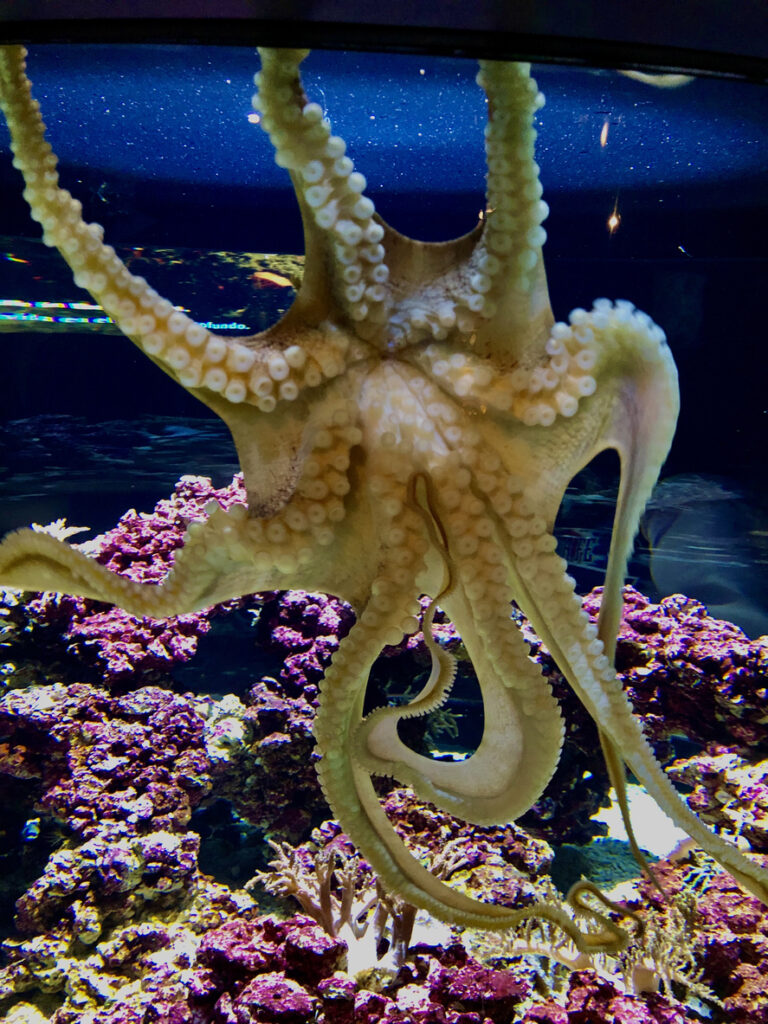The octopus is a fascinating creature, both inside and out. From its unique number of arms and three hearts down to its extreme intelligence thanks to having an impressive total of nine brains, there’s so many interesting facts to get to grips with. Octopuses can also do many incredible things, including walking and camouflaging to blend in with their surroundings.
Whether you know very little about these sea animals or are a self-proclaimed octopus expert, we’re here to shed some light on how they move, what holds up their insides and their unique skeletal structures. We promise it’s nowhere near as gruesome as it sounds!
Do octopuses have bones?
Octopuses belong to the invertebrate family and don’t have any actual bones in their bodies. Now, this might leave you scratching your head and wondering how they survive without bones of any kind. But the answer to this question is actually much simpler than you might think.
These incredible sea creatures have adapted over the millions of years they’ve been around and have developed something called a hydrostatic skeleton, which we’ll explain in more detail below.

What is a hydrostatic skeleton & how does it work?
You might have heard of other skeleton types like endoskeletons and exoskeletons, but what about the less common hydrostatic skeleton?
A hydrostatic skeleton means that the creature has a fluid-filled muscle system instead of hard, dense bones. This fluid is what allows the creature to move and ensures its body remains well supported. Without this, their bodies risk collapsing under their own weight and their muscle movements would be severely impaired.
While it works similarly to a regular skeleton system by supporting the body, the main reason for their lack of bones is that they’re generally not needed for the creature to live a full and healthy life. In the case of the octopus, the water pressure is more than enough to support their body and the muscles (often referred to as hydrostats) still allow them to move as they need to.
Plus, the unusual skeleton means that they can squeeze into places and gaps that other creatures with bones wouldn’t be able to. Not only can this help protect them from predators and poachers, but it also means they’re able to hunt in unexpected places. The skeleton is an exciting evolutionary development, but it’s one that not many know about!
How do octopuses move?
As you’ll probably know, an octopus has eight arms. But you might not know that each of these is packed with incredibly strong muscles. Without carrying all the weight of hard bones around, they benefit from added buoyancy which helps allow them to easily float around the oceans and seas. Octopuses also have siphons which can shoot jets of water to help propel them through the water quicker.
Their movements are much more flexible and fluid because of their skeletal structures, which sets them apart from many other sea creatures – even those with exoskeletons on the outside of their bodies!
However, they haven’t always been this way. Like molluscs, the earliest known octopuses from around 140 million years ago were covered by a hard shell. They then evolved over time and the shell disappeared because it wasn’t a necessity. So clever!

Which other sea creatures have a hydrostatic skeleton?
Animals with hydrostatic skeletons admittedly aren’t the most common. But like the octopus, there are a few other boneless creatures in our waters and even on land. These include well-known animals like jellyfish, flatworms, nematodes and earthworms.
You can usually spot them from their more unusual appearances since many of these creatures are see-through in appearance. The clue is that if you can see through their body and there aren’t any visible bones, it’s more than likely that they’re propped up by a hydrostatic skeleton.
One of the most interesting things to note is that these creatures don’t usually have any teeth either, since these are classed as bones.
How does a hydrostatic skeleton benefit these marine creatures?
There are a variety of ways the creatures with this type of skeleton benefit from this development. Below we’ll glide through our list of the main advantages…
- They can squeeze into extremely small places thanks to a lack of rigid bone structures in their bodies
- Creatures without dense bones are much more lightweight which allows for more flexible, quicker movements
- Although they can’t use bones for leveraging strength, they can get into small spaces and expand their bodies to pry things open or even squash their prey to suffocate them
- Their healing time is significantly reduced because the fluid in their bodies can quickly regenerate, unlike bones which usually take longer to mend
Check out our website to book your tickets to meet the largest species of octopus and learn even more interesting facts about our sea creatures.
